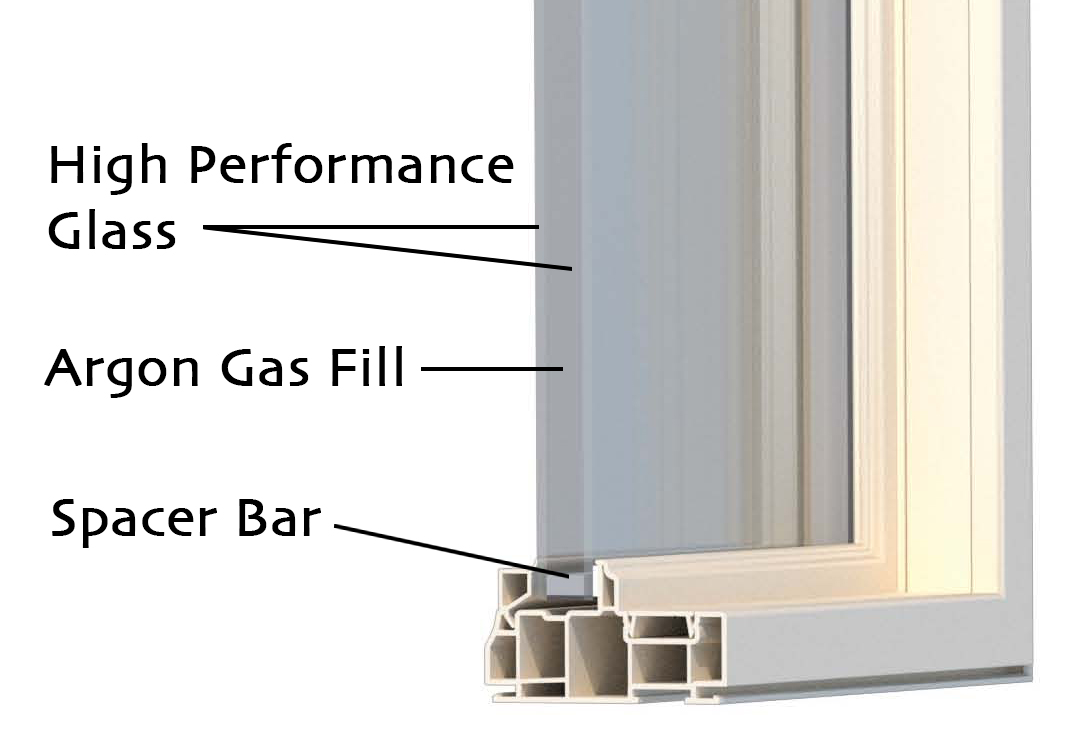You might have heard the term “argon gas” in connection to windows and wondered what gas has to do with a window being energy efficient. Just like heat conduction (or the transfer of heat) warms the handle of a cast iron skillet on a hot stove burner, it also “warms” window glass and air, which in turn increases energy costs for both heating and air conditioning. Argon filled windows reduces energy loss, thereby keeping a home comfortable and thermostat at an affordable setting. Without giving you a chemistry lesson, here is an overview of Argon gas and how it works to insulate your home.
Argon has a 34% lower conductivity rate than air, is non-toxic and inflammable, and is the third most common atmospheric gas comprising about 1% of the air we breathe. Argon is also inexpensive and the most common low-conductivity gas used as fill for multi-paned windows or insulated glass (IG) windows.
The Argon gas inside windows will dissipate slightly over time; estimates range from a low 0.5 to 1% annually. We believe it’s our responsibility to ensure Argon remains inside an IG window for as long as possible. Using the Super Spacer system, Glass-Rite places structural foam material between the two panes of glass in the frames of our IG units; the resulting window conducts heat at a rate 950 times lower than an alternative manufacturing approach.
At Glass-Rite we manufacture our own Argon gas filled multi-paned IG units right here in Albuquerque, and submit them for IGMA (Insulated Glass Manufacturer’s Alliance) testing under conditions specific to New Mexico; such as wide temperature and humidity fluctuation and heavy winds that can accelerate weathering and leakage. Our windows consistently excel in performance ratings for IGMA tests.
Glass-Rite, locally owned and operated since 1984, is your Albuquerque window replacement specialist. We invite you to come by our showroom today for a personal look at our vinyl replacement windows manufactured using the Super Spacer system and Argon gas.

